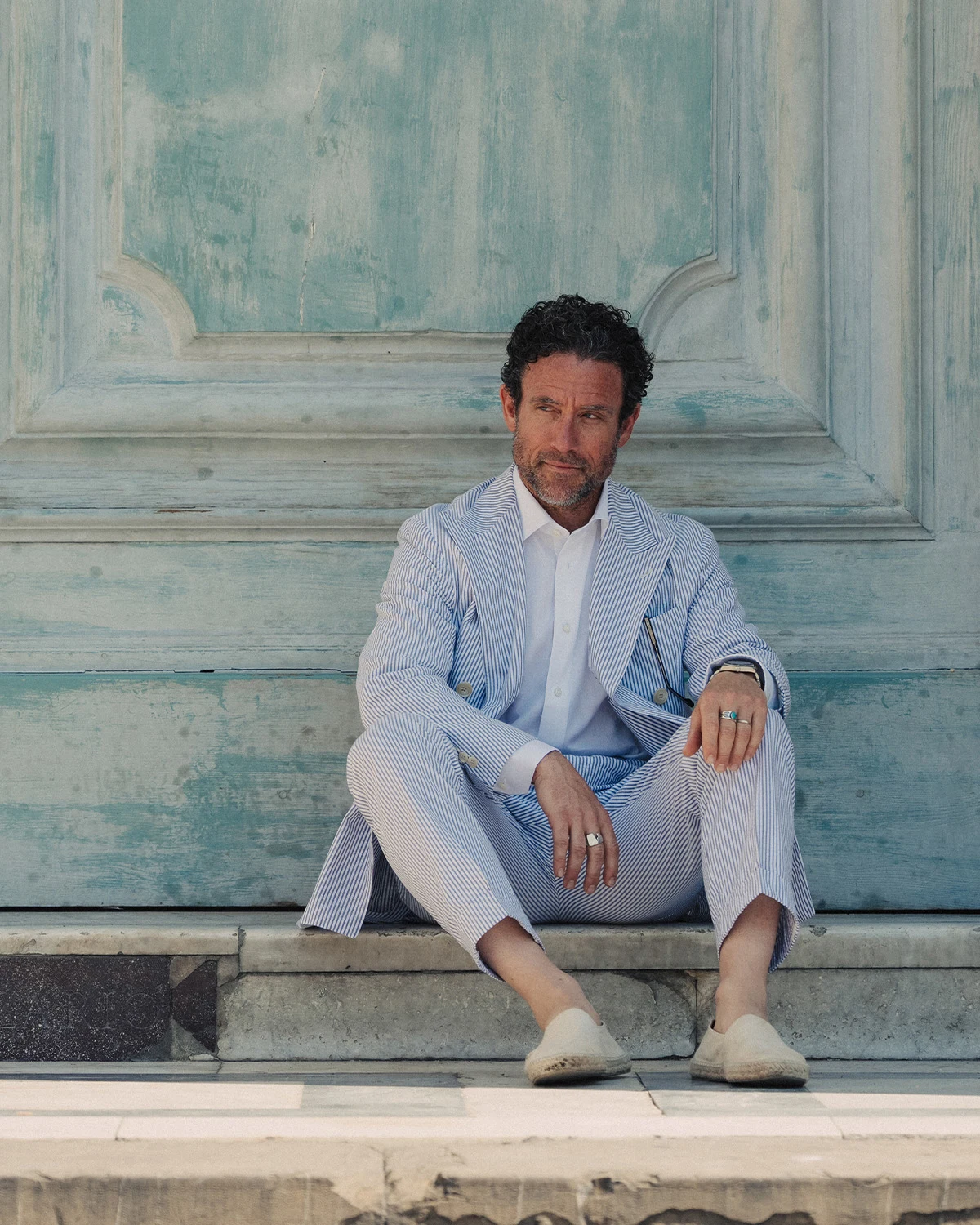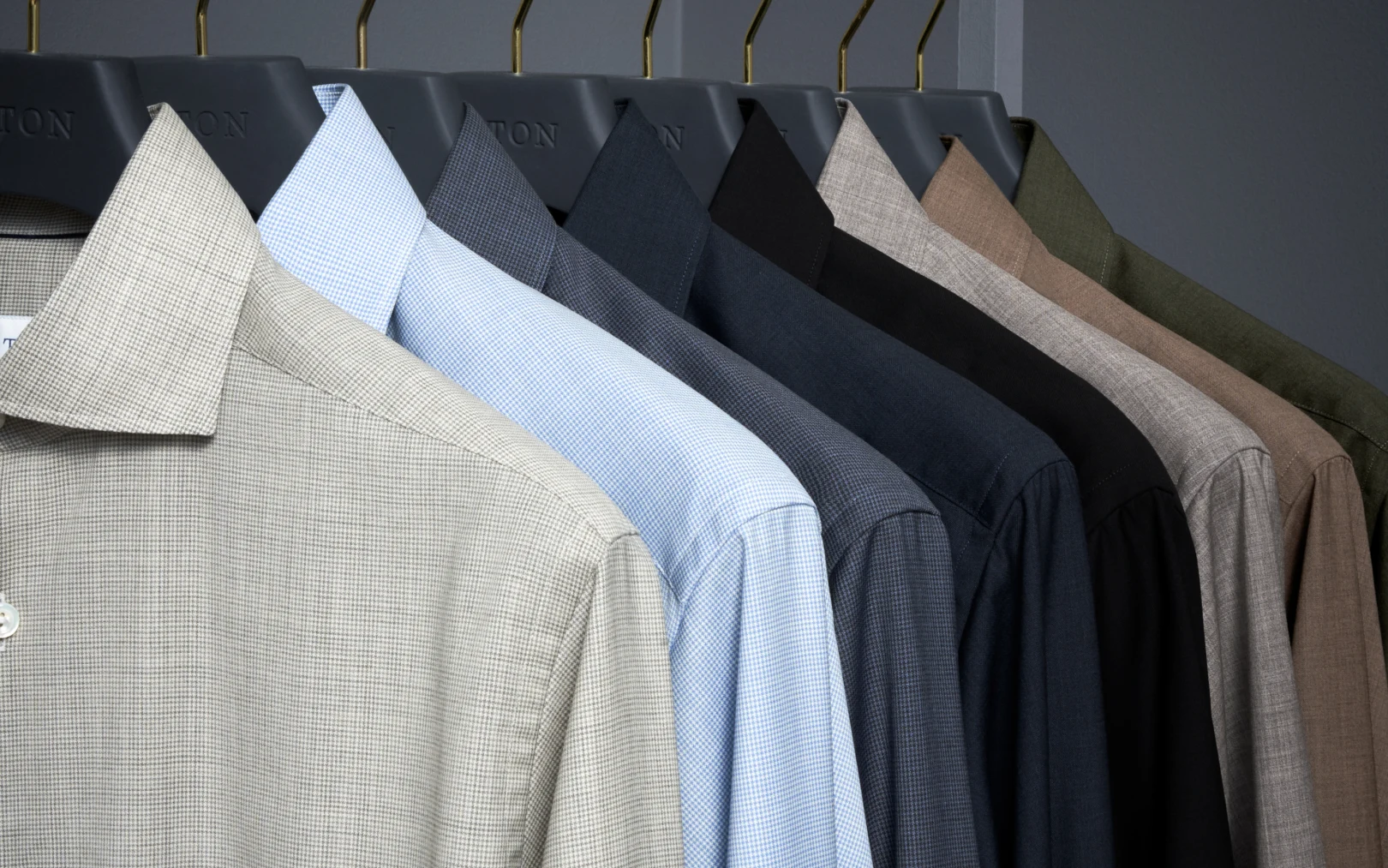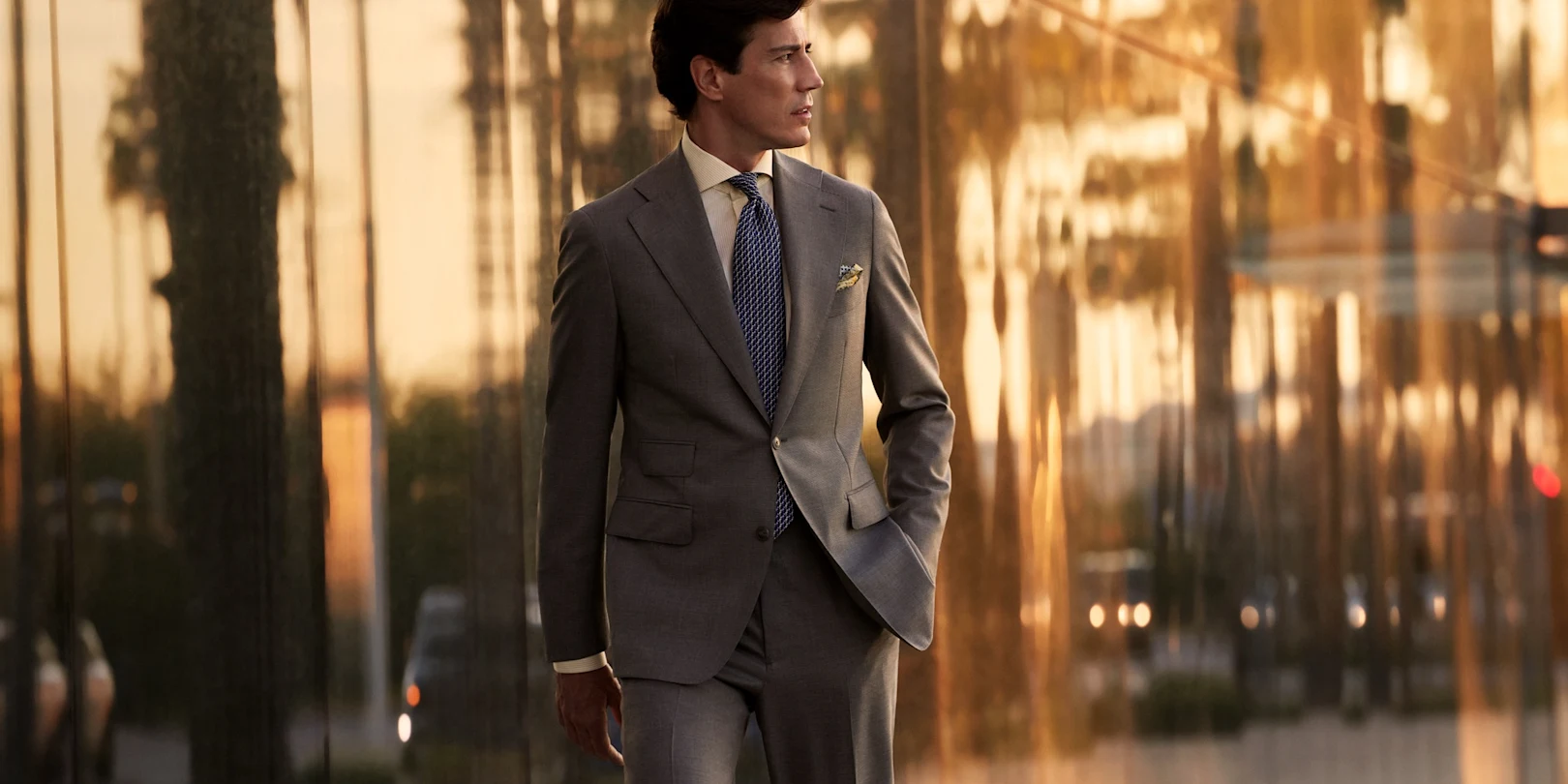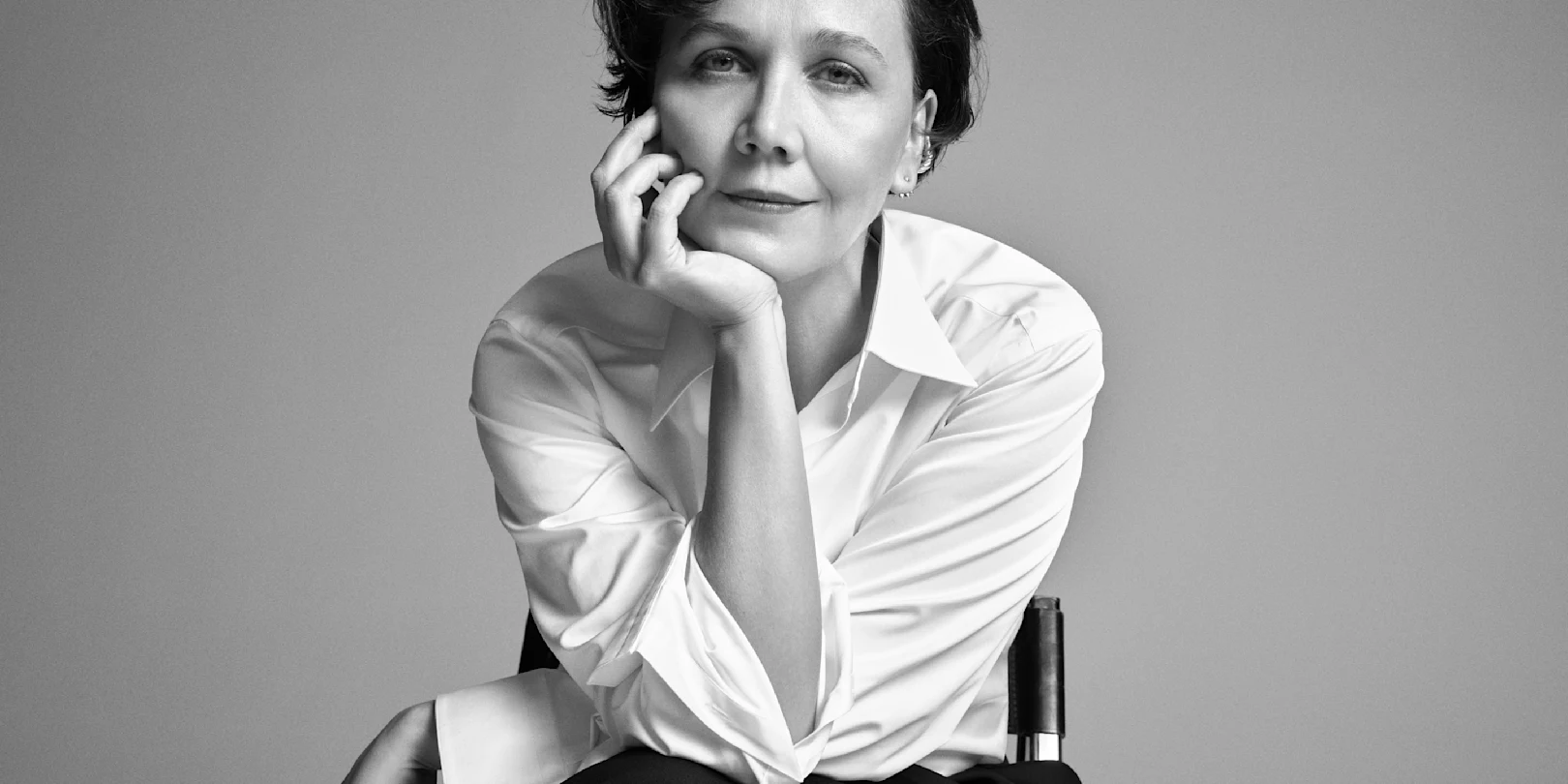
The Versatility of a White Shirt
Style Guide
By: Eton (Photo: Milad Abedi) • 7 minExploring the Iconic Style of Peter Zottolo in Florence, Milan and Paris.
Get ready to embark on a style adventure with Peter Zottolo, a union electrician by trade, fashion photographer, and the US Director of Plaza Uomo, hailing from San Francisco. With a penchant for both practicality and sartorial finesse, Peter's fashion choices encapsulate modern luxury. From his workdays on the jobsite in well-worn denim to his sartorial appearances in Italian tailoring reminiscent of the streets of Florence, Milan, and Paris, Peter's wardrobe reflects his utilitarian approach and commitment to investing in quality garments. Join us as we dive into Peter's captivating journey, his affinity for the iconic white shirt, and his unique perspectives on the distinct styles of these three fashion-forward cities. Discover the profound impact clothing has on our lives and why it truly matters, through the eyes of this remarkable menswear enthusiast.

Eton: During your time in Florence for Pitti Uomo, as well as Paris and Milan for the men's shows, you curated three distinctive looks. Could you acquaint us with these three looks, all centered around Eton’s iconic white shirt?
Peter: Certainly! When considering my ensembles, I aimed for versatility, allowing me to quickly transition between formal and casual settings, depending on the occasion. Each of these three suits offered that flexibility, making the white Eton shirt a perfect complement.




Eton: How did you manage to strike a balance between formality and casualness with these looks?
Peter: I wanted to ensure that the outfits could seamlessly adapt to different environments, whether I opted for a tie or chose to go without. The inherent adaptability of the white shirt allowed it to harmoniously blend into each look.
Eton: How would you define your personal style?
Peter: My personal style is largely based on the surroundings I find myself in. When I'm on the jobsite, I reach for denim and boots. For professional meetings, I embrace a smarter, more refined look, opting for a tailored suit paired with a tasteful tie. And when dressing for a dinner out, I try to strike a balance between elegance and ease, such as a suit complemented by an open-collared shirt.



Eton: From your perspective, what sets apart these three cities in terms of style?
Peter: When it comes to style, each of these cities possesses its own distinctive flair and charm.
In Florence, the men possess an uncanny ability to effortlessly embody the timeless elegance of the classic jacket-and-tie ensemble. Far from being stuffy, however, imperfections are embraced, and the character of their rumpled suits only adds to the charm.
Moving to Milan, you tend to notice a more business-oriented attire prevailing. Picture navy or grey suits impeccably matched with dark ties. The Milanese have mastered the art of looking like a million bucks while exuding a somber “city” allure. Suits are generally more tailored.
And finally, in the realm of Parisian fashion, there exists an intoxicating nonchalance that borders on the edge of sensuality. Ties are off, shirts unbuttoned to reveal an enticing glimpse, and a lived-in bohemian quality permeates their garments. The Parisian men effortlessly blend disparate styles to create a truly individualistic expression of fashion.
Eton: Can you reminisce about the first time you purchased a white shirt for yourself and the occasion it was intended for?
Peter: I can’t actually recall the first time as I grew up wearing shirts and ties, although I've always had an abundance of white shirts in my wardrobe, outnumbering the others.
Eton: In regard to the white shirt as a garment today, how would you describe your relationship with it?
Peter: To me, I think of a white shirt as a blank canvas. Its timeless appeal allows it to be worn with practically everything: beat-up jeans, elegant tweed sport coats, or refined worsted suits. Its utilitarian adaptability means there is never a place it doesn’t fit in, and is always the right choice.
Eton: What guidance or suggestions would you offer to someone who is curating their personal wardrobe for a multi-city trip or in general?
Peter: When assembling your personal wardrobe, whether it's for a multi-city journey or everyday wear, it's crucial to consider your destination and select items that offer versatility. Opt for pieces that can serve double duty, allowing you to pack lighter.
For instance, a well-chosen casual suit paired with a white shirt can serve as the foundation for numerous outfits. An efficient yet dynamic combination can adapt to various settings by simply adding or removing a tie. This way, you can achieve multiple distinct looks without the need for excessive packing.
Eton: Could you share your background and the journey that led you to become both a photographer and an editor?
Peter: With a background as a union electrician, my affinity for hands-on craftsmanship was ingrained from an early stage. It was through this lens that I began to appreciate the parallel between the art of fashion and the art of my trade. A well-constructed outfit, like a skillfully executed installation, can serve both form and function.
Growing up, I attended religious services regularly, where timeless coats and ties were commonplace. This exposure ignited my curiosity, not only about the makers behind the garments themselves but also about the way the suit has been shaped by modern social history in various locales. This fascination propelled me into exploring the captivating interplay between culture, style, and clothing.
I discovered the joy of capturing these interpretations through a lens, and as a photographer, I enjoy documenting interpretations and expressions of style. Simultaneously, my journey as an editor allows me to curate and showcase the dynamic fusion of traditional and contemporary styles.





Eton: What ignites your passion and serves as your driving force?
Peter: For me, shifting to work in construction serves as an opportunity to reset, to shift gears, and focus on entirely different projects. This break allows me to return with a renewed perspective and a fresh set of eyes. Alternatively, traveling is a great excuse to place yourself in fascinating environments and expand your concept of beauty.
Eton: Who do you consider an icon?
Peter: That’s a tough question as I draw inspiration and look up to various individuals for different reasons. One figure who I find particularly Iconic is Paul Newman, mostly for his natural and effortless presence whenever his picture was taken. Within my own my photography I strive to capture those candid moments where my subject is at ease and genuine. On the other hand, I absolutely love the artistry of Peter Lindbergh who skillfully created a world through his lens through deliberate manipulation. I am fortunate to have a wide circle of exceptionally talented photographers whom I consider friends. Their work serves as a continuous source of inspiration, and to me, each one as iconic as the next. And, the list is long.



